Abstract
The two year outcome of extremely low birth-weight (ELBW) infants (birth weight 500 to 999 g), born in the state of Victoria over two distinct eras, 1979-80 and 1985-7, were compared. In the 1979-80 era, 25.4% of the ELBW infants survived to 2 years of age; only 12.5% of liveborn ELBW infants survived to 2 years with no neurological disabilities. In the 1979-80 era, ELBW infants born outside the level III centres in the state were significantly disadvantaged in both mortality and neurological morbidity. By 1985-7, the two year survival rate of ELBW infants rose significantly from 25.4% to 37.9%. By 1985-7, the proportion of ELBW infants who survived to 2 years free of neurological disabilities increased from 12.5% to 26.2%. Despite the improved survival, the absolute number of 2 year old children survivors with severe neurological disabilities remained constant at 8/year in both eras. By 1985-7, fewer ELBW infants were born outside the level III centres, their survival rate remained lower, but the severe neurological disability rate in survivors was no longer significantly higher. There has been a concomitant improvement in both survival and reduction in neurological morbidity.
Full text
PDF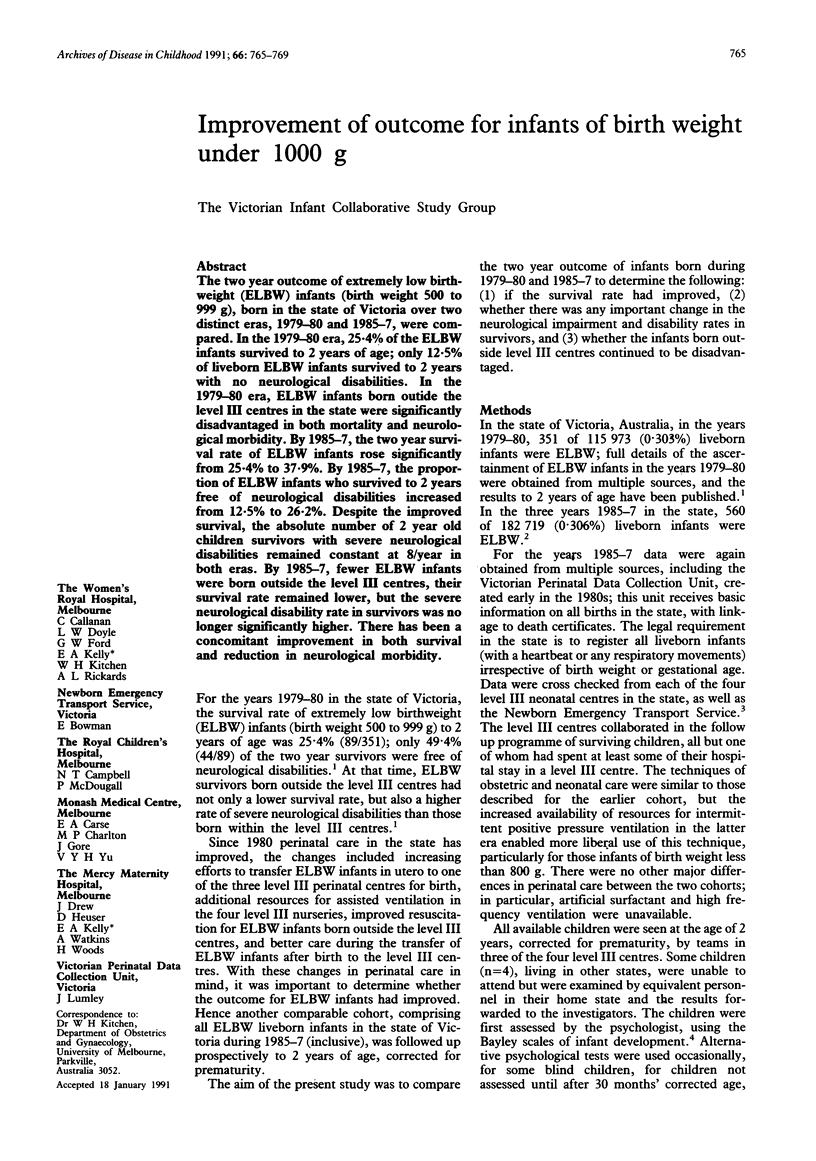
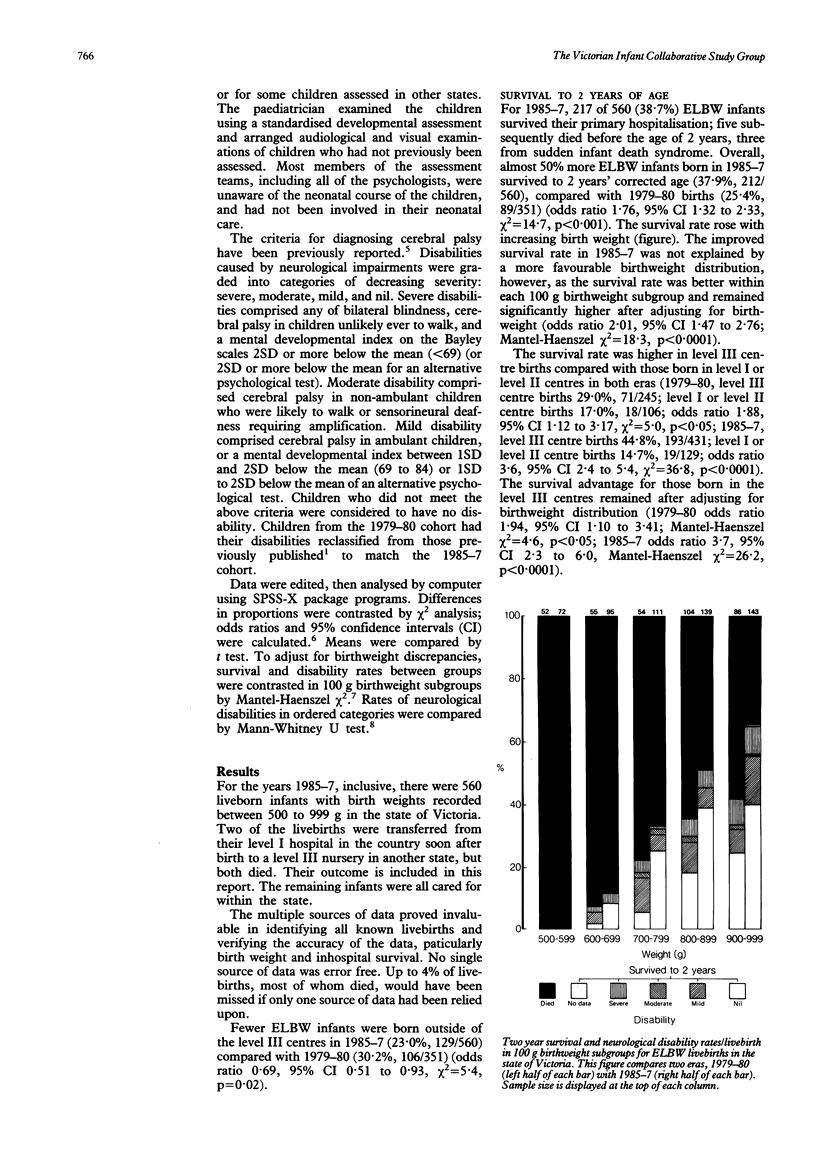
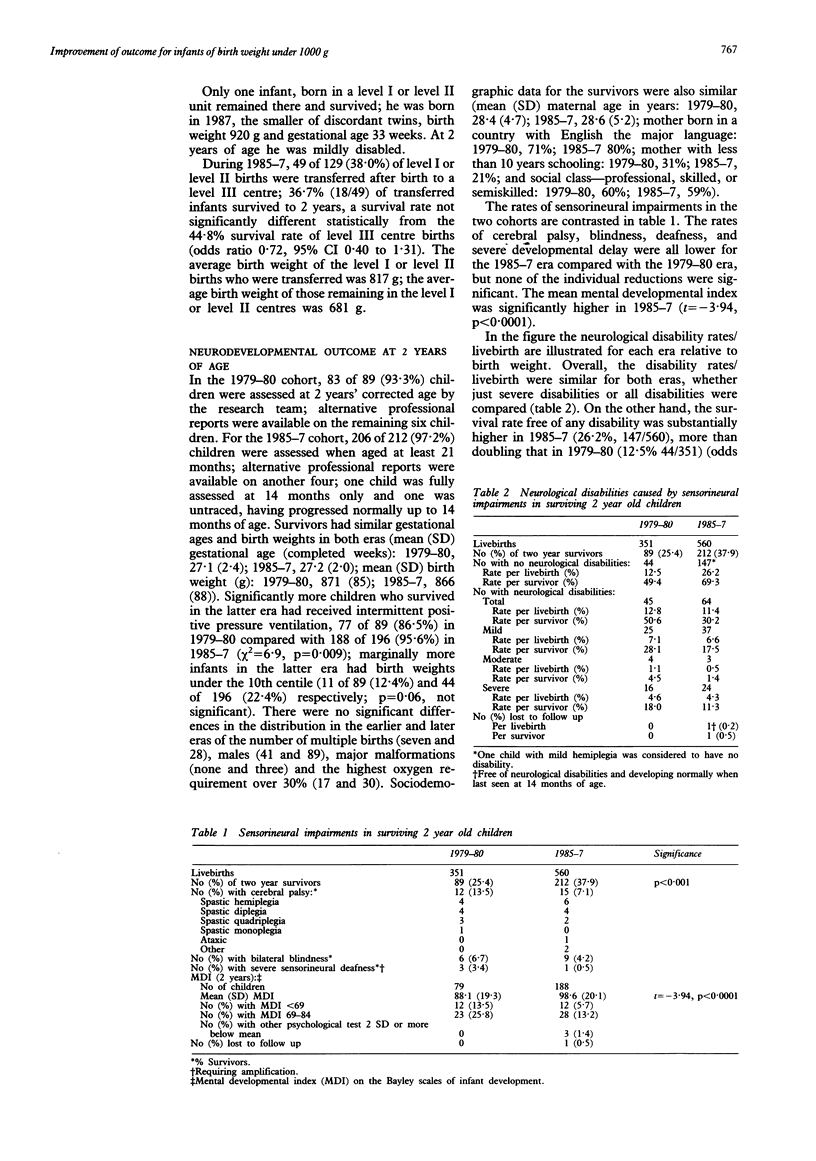
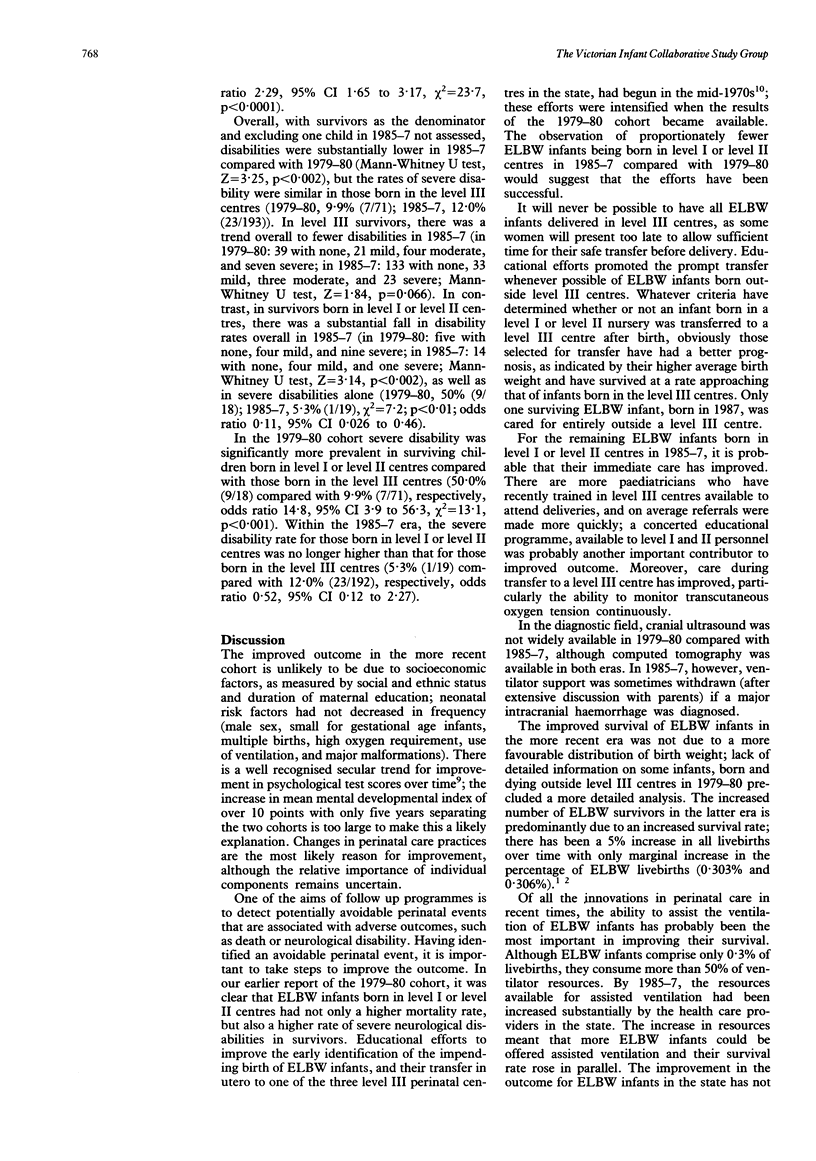
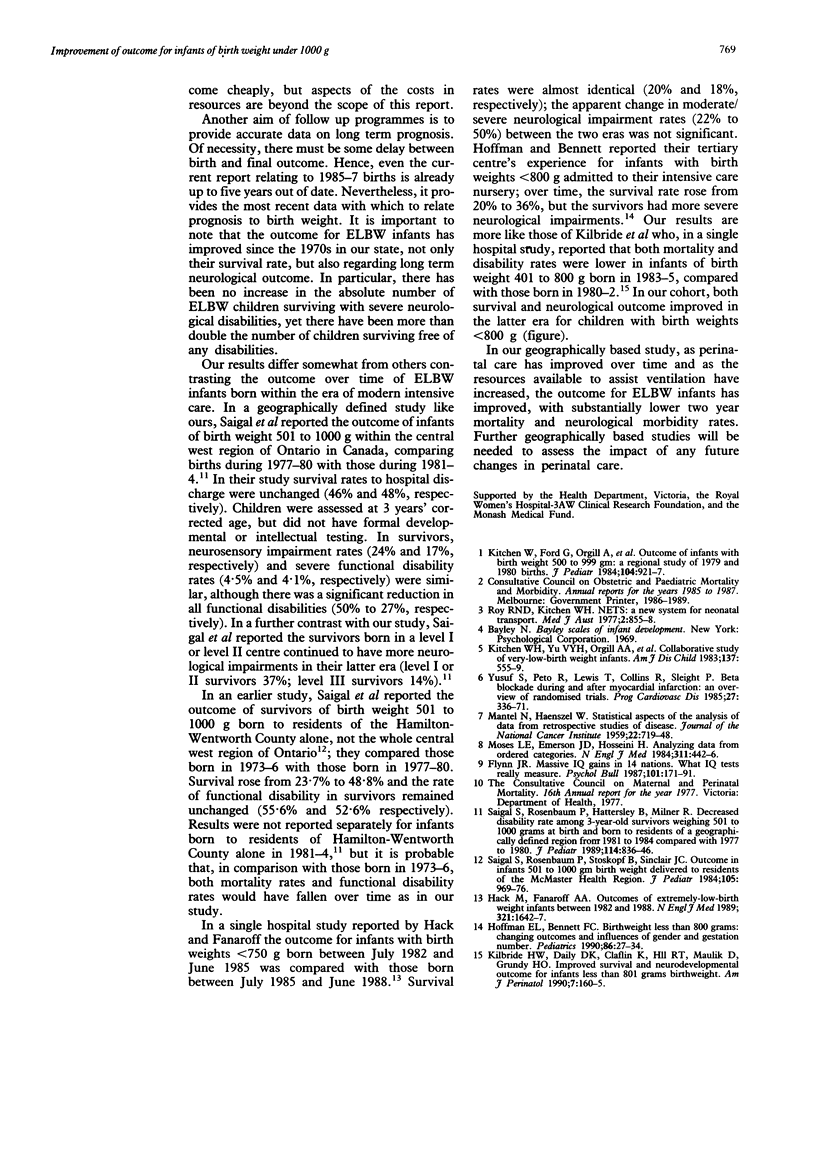
Selected References
These references are in PubMed. This may not be the complete list of references from this article.
- Hack M., Fanaroff A. A. Outcomes of extremely-low-birth-weight infants between 1982 and 1988. N Engl J Med. 1989 Dec 14;321(24):1642–1647. doi: 10.1056/NEJM198912143212405. [DOI] [PubMed] [Google Scholar]
- Hoffman E. L., Bennett F. C. Birth weight less than 800 grams: changing outcomes and influences of gender and gestation number. Pediatrics. 1990 Jul;86(1):27–34. [PubMed] [Google Scholar]
- Kilbride H. W., Daily D. K., Claflin K., Hall R. T., Maulik D., Grundy H. O. Improved survival and neurodevelopmental outcome for infants less than 801 grams birthweight. Am J Perinatol. 1990 Apr;7(2):160–165. doi: 10.1055/s-2007-999471. [DOI] [PubMed] [Google Scholar]
- Kitchen W. H., Yu V. Y., Orgill A. A., Ford G., Rickards A., Astbury J., Lissenden J. V., Bajuk B. Collaborative study of very-low-birth-weight infants. Correlation of handicap with risk factors. Am J Dis Child. 1983 Jun;137(6):555–559. doi: 10.1001/archpedi.1983.02140320031005. [DOI] [PubMed] [Google Scholar]
- Kitchen W., Ford G., Orgill A., Rickards A., Astbury J., Lissenden J., Bajuk B., Yu V., Drew J., Campbell N. Outcome in infants with birth weight 500 to 999 gm: a regional study of 1979 and 1980 births. J Pediatr. 1984 Jun;104(6):921–927. doi: 10.1016/s0022-3476(84)80500-4. [DOI] [PubMed] [Google Scholar]
- MANTEL N., HAENSZEL W. Statistical aspects of the analysis of data from retrospective studies of disease. J Natl Cancer Inst. 1959 Apr;22(4):719–748. [PubMed] [Google Scholar]
- Moses L. E., Emerson J. D., Hosseini H. Analyzing data from ordered categories. N Engl J Med. 1984 Aug 16;311(7):442–448. doi: 10.1056/NEJM198408163110705. [DOI] [PubMed] [Google Scholar]
- Roy R. N., Kitchen W. H. NETS: a new system for neonatal transport. Med J Aust. 1977 Dec 24;2(26-27):855–858. doi: 10.5694/j.1326-5377.1977.tb107715.x. [DOI] [PubMed] [Google Scholar]
- Saigal S., Rosenbaum P., Stoskopf B., Sinclair J. C. Outcome in infants 501 to 1000 gm birth weight delivered to residents of the McMaster Health Region. J Pediatr. 1984 Dec;105(6):969–976. doi: 10.1016/s0022-3476(84)80093-1. [DOI] [PubMed] [Google Scholar]


